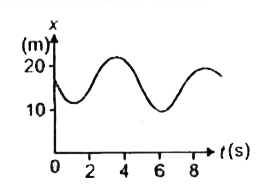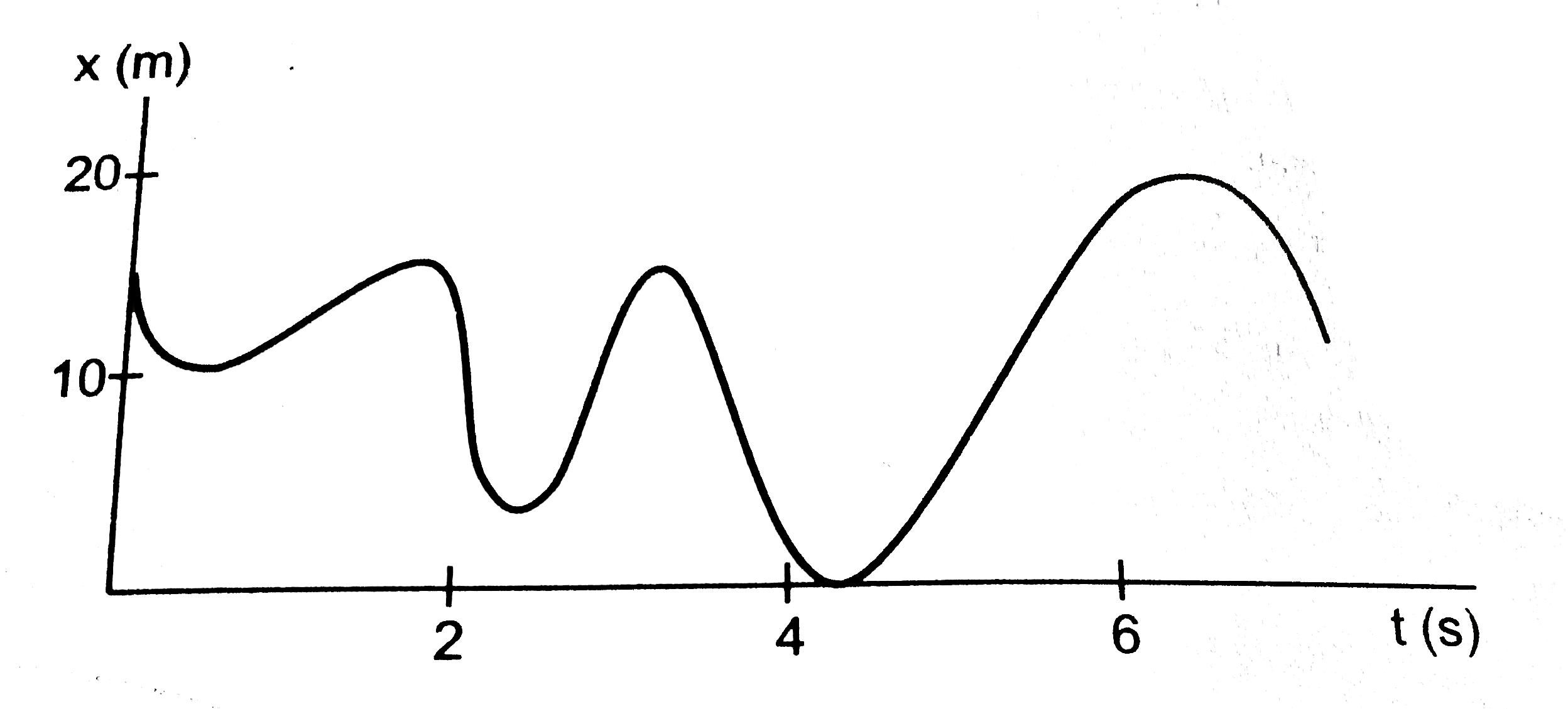The particle is moving such that its displacement along x-axis as a function of time is given by x(x−6)=1−10cosωt. Find amplitude, time period and mean position.
Video Solution
Text Solution
x(x−6)=1−10cosωt By adding 9 on both sides
x2−6x+9=10−10cosωt
(x−3)2=10[1−cosωt]=5[sin2(ωt2)]
(x−3)=√5sin(ωt2)
So motion of particle is SHM with A=√5 units,
T=4πω units & means position is at x=3 units.
|
Topper's Solved these Questions
- OSCILLATIONSBOOK - NARAYNACHAPTER - OSCILLATIONSEXERCISE - C.U.Q
78 Videos
- OSCILLATIONSBOOK - NARAYNACHAPTER - OSCILLATIONSEXERCISE - LEVEL -I (C.W)
34 Videos
- NEWTONS LAWS OF MOTIONBOOK - NARAYNACHAPTER - NEWTONS LAWS OF MOTIONEXERCISE - PASSAGE TYPE QUESTION
6 Videos
- PHYSICAL WORLDBOOK - NARAYNACHAPTER - PHYSICAL WORLDEXERCISE - C.U.Q
10 Videos
Similar Questions
Knowledge Check
A point moves such that its displacement as a function of times is given by x2=t2+1. Its acceleration at time t is
A1x3B−1x2C1x−t2x3D1x−tx3The displacement x of a particle in motion is given in terms of time by x(x−4)=1−5cosωt
Athe particle executes SHMBthe particle executes oscillatory motion which is not SHMCthe motion of the particle is neither oscillatory nor simple harmonicDthe particle is not acted upon by a fprce when it is at x=4Figure shows the position of a particle moving on the x - axis as a function of time
 AThe particle has come to rest 4 timesBThe velocity at t = 8 s is negativeCThe velocity remains positive for t = 2 s to t = 6 sDThe particle moves with constant velocity.
AThe particle has come to rest 4 timesBThe velocity at t = 8 s is negativeCThe velocity remains positive for t = 2 s to t = 6 sDThe particle moves with constant velocity.
The displacement x of a particle along the x-axis at time t is given by x=a12t+a23t2. Find the acceleration of the particle.
View SolutionFigure shows the position of a particle moving on the X-axis as a function of time.

View SolutionThe position of a particle moving along x- axis is given by x=x0cos2(ωt) . Its when it is at mean position is
View SolutionThe displacement x of a particle moving along x-axis at time t is given by x2=2t2+6t. The velocity at any time t is
View SolutionFigure shows the displacement of a particle going along the X-axis as a function of time. The force acting on the particle is zero in the region

View Solution